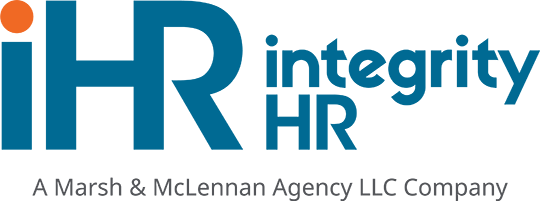Making Workplace Decisions With or Without an HR Manager or Outsourced Human Resources During COVID-19
If your business employs 500 or fewer employees, you’ll most likely need to comply with requirements of the Families First Act – which came into effect 4/1/2020 as a result of the coronavirus outbreak in the United States. The tough part about dealing with the new requirements of Emergency Sick Leave as well as Emergency Family Medical Leave is that without an HR manager or Outsourced HR department, the small business owner is faced with attempting to implement the requirements without many resources, while still running the business and making tough decisions about operations.
Let’s drill down into implementation of EMERGENCY SICK and EMERGENCY FAMILY MEDICAL LEAVE, so whether or not you have an HR function, you’ll know the basics.
Emergency Sick Leave – Who’s eligible?
Paid sick time is immediately available for all your eligible employees and may be taken for any of the following 6 reasons.
- The employee is subject to a federal, state, or local quarantine or isolation order related to COVID-19.
- The employee has been advised by a health care provider to self-quarantine due to a COVID-19 concern.
- The employee is experiencing symptoms of COVID-19 and seeking medical diagnosis.
[NOTE] Tax credit for Paid Sick Leave cannot exceed $511 per day for a maximum of 10 days, for the three reasons listed above. Consult your CPA on tax credits associated with Families First Act. - The employee is caring for an individual subject to a federal, state, or local quarantine or isolation order or advised by a health care provider to self-quarantine due to COVID-19 concerns.
- The employee is caring for a son or daughter (under the age of 18) when the school or childcare provider has closed or ceased operations due to COVID-19 precautions.
- The employee is experiencing any other substantially similar condition specified by the Secretary of Health.
[NOTE] Paid sick time may be paid at two-thirds of the employee’s regular rate if taken for the items 4-6 above and tax credit cannot exceed $200 per day for up to 10 days (max tax relief).
How Much Do I have to Pay for the Sick Leave, and for How Long?
Full-time employees are entitled to up to two weeks (80 hours) and part-time employees are entitled to the equal number of hours that they work on average over a two-week period.
And Then There’s The Emergency Paid Medical Leave…
Who Can Take This Leave?
For your eligible employees, they may take up to 12 weeks of job protected leave due to employee being unable to work (not be offered telework options), who is required to care for their son or daughter (under 18 years of age) where the place of care has been closed, or the childcare provider is unavailable.
How do Employees Take the Leave?
Employees should provide written notice to the employer when at all possible.
What’s An Employers Obligation To Pay The Employee While Out?
Emergency FMLA is available when childcare or schools are closed under the Families First Coronavirus Response Act (FFCRA):
- Weeks 1 & 2 are unpaid, unless the employee elects to substitute Emergency Sick Time (at 2/3 of their pay for 10 days capped at $200 per day, or any available PTO/Accrued Sick/Vacation sponsored by the employer); AND
- Up to an additional 10 weeks (weeks 3-12), employees would be paid at 2/3 pay up to $200 per day.
- If the employee had a varying schedule before the leave, use the average number of hours the employee was scheduled over the last six months, for calculating pay. If no period exists, use a reasonable expectation.
- Include leave time away in the calculation of average hours.
[NOTE] Be prepared – some employees may elect their employer-sponsored PTO, sick, or vacation time since this would be paid at 100% versus the 2/3 pay provided by the FFCRA.
Does An Employer Need To Hold A Job? Job Reinstatement
Yes, the employer must make a reasonable attempt to return the employee to work for up to a year following leave.
Some exceptions apply to job reinstatement for employers with less than 25 employees if certain conditions are met:
- The job no longer exists because of changes affecting employment caused by an economic downturn or other operating conditions that affect employment caused by a public health emergency, the employer makes reasonable efforts to return the employee to an equivalent position and the employer makes efforts to contact a displaced employee if anything comes up within a year of when they would have returned to work.
- Additional exemptions may exist for employers with fewer than 50 employees, where the viability of the business is put at risk.
Want Some HR Help To Get You Through This?
This whole thing can be very confusing, especially if you don’t have a clear-cut HR function, human resources department, or outsourced HR to help you through this. Click Here to download our employer’s resource guide on dealing with COVID-19 in the workplace.
And if you need help creating furlough or layoff letters, we have samples for those as well. Keep in mind, adjusting your policies and employee handbook to address the requirements of the Families First Act is critical. And don’t forget to post the Department of Labor’s notice outlining the employee rights during COVID-19.
What About the Aftermath?
We’d all like to have a crystal ball to know what the new workplace is going to look like, but instead, we have to take a few guesses about how we adjust to our new normal post-COVID-19.
What should we be thinking about as a business owner after we get through this period?
- We’ll need to get ahead of the curve on recruiting and hiring workers to help support growth as the economy improves. This may include rehiring laid-off workers or finding alternative employment pools. Consider recruiting early in order to locate the workforce you’ll need under the “new way of doing business” post-coronavirus.
- We’ll probably need to think about alternative HR solutions and ways to allow people to work – particularly if we’ve had employees working from home successfully.
- Maybe we make decisions on doing more with less, outsourcing unproductive functions, rethinking employee health benefits, and asking employees what they really need to help narrow our focus on costs.
- We’ll probably need to do some training on “employee management” techniques with our leaders – giving them refreshers on managing remote workers and returning workers. Managing performance in the “new way of work” may be different so outlining performance expectations will help you as a small business owner re-calibrate much more quickly. Consider some supervisory training or front-line leadership training to help your leadership regroup in the new way of working.
- We should also be looking at whether we need full-service support departments, insourcing only the absolute required functions. Consider the value of conducting an HR strategy, risk, and effectiveness evaluation to help identify those areas of HR that are most valuable to you, and determine if outsourcing some or all of those functions can be beneficial in gearing up for business coming out of the coronavirus.
As we get on the other side of “stay at home” and “shelter in place” orders, successful leaders will evaluate small business and employee needs and will find ways HR can save money in the “new environment.” In preparing for rapid opportunities for growth, take the time to find the tools, resources, and HR experts to help create a solid plan for preparing your business to thrive on the other side of COVID-19.











